It’s been a while since I sat down and checked my water chemistry. The corals are growing for the most part, and growing well. Color still seems to be trouble, and in the last month, algal growth on the glass has picked up the pace. With the pH probe on my Apex routinely starting to warn me about the pH hitting 8.5 (and shutting down all my lights to stop the rising pH) I finally sat down tonight and did some testing. This time, it was quite clear that things were out of whack, for while my Apex was reading 8.50, the Seachem liquid test came back around 8.2.
And this is why you should keep the pH probe calibration solutions on hand. I actually had to clean the probe with some vinegar, but once that was done, I got down to recalibration. It’s an easy process, well explained in the Apex manual. When it was done, my pH came out at 8.13; much more in line with my liquid test. Of course, I’d been holding back on my C-Balance 2 part dosing due to pH “riding high”, but I may have been relying too much on the probe. The water quality checked out like this after calibration.
pH probe – 8.13
pH (Seachem) – 8.2
Alkalinity (Seachem) – 2 meq/L
Calcium (Salifert) – 420 ppm
Magnesium (Salifert) – 1270 ppm
Nitrate (Salifert) – 50 ppm
Wait, yes, seriously, the nitrates have shot up to 50 ppm. Great. That very well could explain why my Hot Pink Birdsnests are brown, my Sour Apple Birdsnests are lavendar, and my Red Pocilloporas are looking more yellow with purple polyps (I call them Red Pocilloporas, but they came to me as a Red Birdsnest, and it seems that they’re growing without problems right into the Sour Apple Birdsnest, so the jury is out on what genus this coral belongs to right now!). I did add a frag from John Coppolino, a very special “Hulk Milli” Acropora milleopora. I’ve just been curious to see how other SPS will do under the Ecoxotic LEDs as well as whether the Foureye Butterfly would take it out or not. So far it’s sitting there, and has obviously darkened, no doubt a direct result of the high nitrates.
I’ve been doing very low level Vodka dosing for a while, but perhaps not to the volume and consistency I should be. Of course, I’ve also been pumping the tank full of food in an effort to push the clowns to breed. Looks like some water changes are unavoidably in their future.
And that’s all there is to say about the Lightning Project right now. It is still very much a waiting game.
- About The Lightning Project
- Inventory of F1 PNG Lightning and White Stripe Maroon Clownfish
- F1 PNG Lightning Maroon Clownfish, BZLM1
- F1 PNG Lightning Maroon Clownfish, BZLM2
- F1 PNG Lightning Maroon Clownfish, FW1
- F1 PNG Lightning Maroon Clownfish, LM10
- F1 PNG Lightning Maroon Clownfish, LM11
- F1 PNG Lightning Maroon Clownfish, LM12
- F1 PNG Lightning Maroon Clownfish, LM13
- F1 PNG Lightning Maroon Clownfish, LM14
- F1 PNG Lightning Maroon Clownfish, LM15
- F1 PNG Lightning Maroon Clownfish, LM16
- F1 PNG Lightning Maroon Clownfish, LM17
- F1 PNG Lightning Maroon Clownfish, LM18
- F1 PNG Lightning Maroon Clownfish, LM19
- F1 PNG Lightning Maroon Clownfish, LM20
- F1 PNG Lightning Maroon Clownfish, LM3
- F1 PNG Lightning Maroon Clownfish, LM4
- F1 PNG Lightning Maroon Clownfish, LM5
- F1 PNG Lightning Maroon Clownfish, LM6
- F1 PNG Lightning Maroon Clownfish, LM7
- F1 PNG Lightning Maroon Clownfish, LM8
- F1 PNG Lightning Maroon Clownfish, LM9
- F1 PNG Lightning Maroon Clownfish, MD1
- F1 PNG Lightning Maroon Clownfish, MWP3
- F1 PNG Lightning Maroon Clownfish, WS17
- F1 PNG Lightning Maroon, EC1
- F1 PNG Lightning Maroon, GL1
- F1 PNG White Stripe Maroon Clownfish, BZWS1
- F1 PNG White Stripe Maroon Clownfish, BZWS2
- F1 PNG White Stripe Maroon Clownfish, BZWS3
- F1 PNG White Stripe Maroon Clownfish, WS10
- F1 PNG White Stripe Maroon Clownfish, WS11
- F1 PNG White Stripe Maroon Clownfish, WS12
- F1 PNG White Stripe Maroon Clownfish, WS13
- F1 PNG White Stripe Maroon Clownfish, WS14
- F1 PNG White Stripe Maroon Clownfish, WS15
- F1 PNG White Stripe Maroon Clownfish, WS16
- F1 PNG White Stripe Maroon Clownfish, WS4
- F1 PNG White Stripe Maroon Clownfish, WS5
- F1 PNG White Stripe Maroon Clownfish, WS6
- F1 PNG White Stripe Maroon Clownfish, WS7
- F1 PNG White Stripe Maroon Clownfish, WS8
- F1 PNG White Stripe Maroon Clownfish, WS9
- F1 PNG White Stripe Maroon, EC2
- F1 PNG White Stripe Maroon, FW2
- F1 PNG White Stripe Maroon, GL2
- F1 PNG White Stripe Maroon, MD2
- Lightning Breeding Directive
- Lightning Maroon Clownfish Links
- Home
- About The Lightning Project
- Inventory of F1 PNG Lightning and White Stripe Maroon Clownfish
- F1 PNG Lightning Maroon Clownfish, BZLM1
- F1 PNG Lightning Maroon Clownfish, BZLM2
- F1 PNG Lightning Maroon Clownfish, FW1
- F1 PNG Lightning Maroon Clownfish, LM10
- F1 PNG Lightning Maroon Clownfish, LM11
- F1 PNG Lightning Maroon Clownfish, LM12
- F1 PNG Lightning Maroon Clownfish, LM13
- F1 PNG Lightning Maroon Clownfish, LM14
- F1 PNG Lightning Maroon Clownfish, LM15
- F1 PNG Lightning Maroon Clownfish, LM16
- F1 PNG Lightning Maroon Clownfish, LM17
- F1 PNG Lightning Maroon Clownfish, LM18
- F1 PNG Lightning Maroon Clownfish, LM19
- F1 PNG Lightning Maroon Clownfish, LM20
- F1 PNG Lightning Maroon Clownfish, LM3
- F1 PNG Lightning Maroon Clownfish, LM4
- F1 PNG Lightning Maroon Clownfish, LM5
- F1 PNG Lightning Maroon Clownfish, LM6
- F1 PNG Lightning Maroon Clownfish, LM7
- F1 PNG Lightning Maroon Clownfish, LM8
- F1 PNG Lightning Maroon Clownfish, LM9
- F1 PNG Lightning Maroon Clownfish, MD1
- F1 PNG Lightning Maroon Clownfish, MWP3
- F1 PNG Lightning Maroon Clownfish, WS17
- F1 PNG Lightning Maroon, EC1
- F1 PNG Lightning Maroon, GL1
- F1 PNG White Stripe Maroon Clownfish, BZWS1
- F1 PNG White Stripe Maroon Clownfish, BZWS2
- F1 PNG White Stripe Maroon Clownfish, BZWS3
- F1 PNG White Stripe Maroon Clownfish, WS10
- F1 PNG White Stripe Maroon Clownfish, WS11
- F1 PNG White Stripe Maroon Clownfish, WS12
- F1 PNG White Stripe Maroon Clownfish, WS13
- F1 PNG White Stripe Maroon Clownfish, WS14
- F1 PNG White Stripe Maroon Clownfish, WS15
- F1 PNG White Stripe Maroon Clownfish, WS16
- F1 PNG White Stripe Maroon Clownfish, WS4
- F1 PNG White Stripe Maroon Clownfish, WS5
- F1 PNG White Stripe Maroon Clownfish, WS6
- F1 PNG White Stripe Maroon Clownfish, WS7
- F1 PNG White Stripe Maroon Clownfish, WS8
- F1 PNG White Stripe Maroon Clownfish, WS9
- F1 PNG White Stripe Maroon, EC2
- F1 PNG White Stripe Maroon, FW2
- F1 PNG White Stripe Maroon, GL2
- F1 PNG White Stripe Maroon, MD2
- Lightning Breeding Directive
- Lightning Maroon Clownfish Links
I promised something new, so it seems now is a good time to say that once again, the rubbing, cleaning, and courting continue. However, we still have no eggs. Despite the ongoing waiting period, it doesn’t prevent aquarists like John Coppolino, and Marc Levenson, both in Duluth to speak at our local club, from being completely enthralled. In both cases, I think our guests didn’t even make it to their rooms before stopping dead in their tracks to admire our embassador from PNG.
Yeah, NOTHING going on. No cleaning, no nada. Just fish in a tank. Almost depressing. But still alive, and plenty of years to go.
September 26th, 2011. On Facebook:
Matt Pedersen – officially driven mad by Aiptasia, I broke down and brought out the big gun. LiveAquaria.com Diver’s Den spared Four Eyed Butterflyfish, who’s already cleaned out two tanks of Aiptasia, has entered the Lightning Maroon’s domain. 2 minutes in, Aiptasia started dying. Will be documenting before & after + collateral coral damage (none is currently expected).
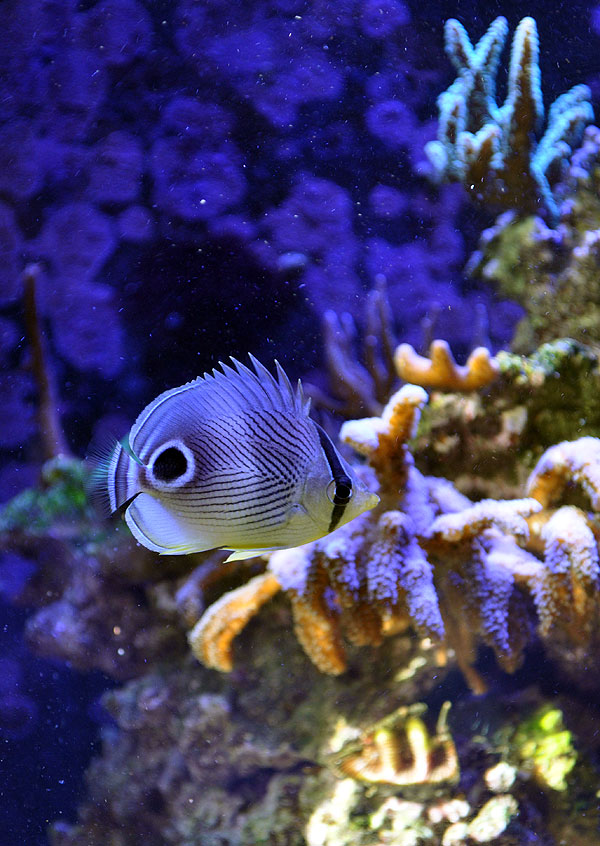
Yes, indeed, the Aiptasia have gotten out of control. Originally found one or two that came in on frags and manually removed them – I thought I was in the clear. Sadly I wasn’t.
When they started popping up, I started hitting them with a Kalkwasser slurry, but that just didn’t seem to work well. The Aiptasia marched on, so I took the next step and ordered up some Joe’s Juice. Of course, it kills them, but I’ve found with products like this that there’s potential for a side effect – in dying, they seem to propagate even more. Sure enough, what was an infestation quickly became a plague after an attempted eradication with Joe’s Juice.
I had a few options. First that came to mind was Peppermint Shrimp. The biggest issue there was simply one of quarantine. NOTHING hits the Lightning Maroon’s tank without either a dip (in the case of coral) or QT (in the case of fish and inverts). Thus, for the same reason that Peppermint Shrimp were out, so too where the Berghia Nudibranchs, again, at least in the short term until I figure out whether I can get some that won’t require QT (and feeding in QT). I’m a butterflyfish fan, and there are many Indo-Pacific Butterflies that can be used for Aiptasia control. Sadly, none of those species were on hand, and they, like any other fish, would have to go through extensive quarantine.
But I did have the Foureye Butterflyfish. Actually I think I have 14 running around at the moment, but the one particular specimen was purchased from the LiveAquaria.com Diver’s Den. This meant it had gone through extensive QT before ever being shipped to me. It originally lived with my Onyx Percula pair, killed a proposed mate, and wiped out any Aiptasia in the tank while leaving the rest of the coral life alone. It then moved on to another tank housing a captive-bred Latezonatus pair from Karen Brittain’s breeding, where once again, it demolished the Aiptasia population while leaving the larger Long Tentacle and Bubble Tip Anemones untouched. Furthermore, I’ve kept Foureye Butterflyfish in reef tanks with corals like Fungia, Turbinaria, and various Gorgonians – none were bothered. However, larger brown Palythoas lost their long tentacles. And, if I think back, I’m pretty sure I had some specimens in an SPS tank before, at least temporarily, and saw no real damage there either (i.e. Xenia and Montipora and whatever else was in there at the time went untouched).
So it was indeed a gamble, but the Foureye had been here for months and had not shown any signs of disease. It had lived with some of my most valuable clownfish without issue. It went into the Lightning Maroon’s tank on the 26th of September, and it is doing well and taking a toll on the Aiptasia population. While not eliminated yet, their presence is reduced. The Maroon pair pushes the Butterfly around a bit, which had me concerned. However, there hasn’t been a single split fin on the Butterflyfish, so the aggression from the Lightning Maroon and her mate is largely bluff.
Since introduction, I have seen the Butterfly nipping in the vicinity of a Birdsnest Coral, but I think it’s actually trying to get at some Aiptasia underneath. There has been no visible damage to any of the corals in the tank, including the Gonioporas (which I was very concerned about). It turns out that the Lightning Maroon and her mate are causing more problems for the LPS in the tank, as they’re routinely moving rubble AND frags all over the tank. Often times I’m finding the smaller Goniopora frags either burried in rubble or upside-down on the other side of the tank. Some have certainly suffered from this abuse. Even the ORA Red Goniopora isn’t opening quite as far these days, I suspect not because the Butterflyfish is nipping at it, but because the Maroon Clownfish have been dumping rubble on top of it! So…much of the “Coral Bones” rubble was pulled out of the tank on October 10th, and the rest will probably come out soon. It was a good aquascaping idea, but I was quickly reminding that a pair of Maroon Clownfish generally have their own ideas about how the tank should look.
- Mike Hoang’s new Goldstripe Maroon Babies were announced moments ago on ReefBuilders. It’s hard to say how excited I was when I stumbled across these baby Goldstripe Maroon Clownfish being turned out by Mike Hoang. I saw them and wondered…if you breed two of these together, will you get Gold Stripe Lightning Maroons?
Of course, it might be very premature to discuss breeding outcomes given that we don’t even know if there’s a genetic component here. However, there’s been no shortage of discussion around what these fish should be called? And yes, just to be clear – no photoshop here – the video of the babies at 3.5 weeks post hatch proves it!
Perhaps even more interesting is that these babies are the offspring of normally-barred captive-bred GoldStripe Maroons:
Initial reports called the fish Teardrop Maroons. Arguably you could say I pursuaded (bullied) Mike away from this name given the prior use of it to describe a common pattern in misbarred Ocellaris Clownfish (not genetic). Mike joked online that maybe they should be called Picasso Maroons. Perhaps a fitting name in my opinion. However, after futher consideration, I would argue that the somewhat Piebald Maroons show off by ORA at the 2010 MACNA are more fitting and similar to the barring pattern displayed by a Picasso Perc, and thus, maybe Picasso might be a good name for that variation.
Mike’s baby Maroon Clowns truly look somewhat like the spotted Amphiprion bicinctus that ORA produces and calls Spotcinctus, a variation that seems to have repeated itself in the fish called the Picasso Clarki Clownfish. Heck, just this morning (9-20-2011), Mike sent photos of a baby he discovered in this batch showing what we’d call a “Pearl Eye” mutation, and this patterning is seen in many of the Spocinctus and Picasso Clarkii.
Similar variations in Maroon Clownfish barring and striping have appeared before from Sustainable Aquatics (SA) and also from wild fish that have been called Horned Maroon Clownfish by SEASMART (the Horned Maroons lacked spotting). If SA already gave their variants a name, it could take priority over anything Mike could want to call them if they’re the same thing.
While waiting to hear back from Sustainable Aquatics, Mike and I discussed the issue of naming, and after some back and forth, in trying to pick something unique, I proffered “it’s a Maroon, right? We have a Lightning Maroon. What about a Hailstorm or Raindrops Maroon?” Mike’s final answer, and a tentative name – Thunder Maroons. Unique and different with a bit of whimsy.
Of course, the discussion continued once we had Matt Carberry of Sustainable Aquatics get back to us – indeed, there was a prior name that SA applied to fish with this phenotype (appearance) –Goldflake Maroons. Matt elaborated on their work with the Goldflake Maroons, writing, “We have seen some aberrant maroons show-up occasionally. The oldest pictures I can find are late 2007; I’m sure that most breeders of maroons on any scale have noticed some of these types of markings. It isn’t extremely common, but we regularly find them in hatches from multiple spawning pairs.” Matt went on to elaborate some initial genetic findings, relaying that they “formed a pair from these, but their offspring have produced only normal maroons (working on the next generation might yield something, but we haven’t explored that). It might be similar to the clarkii pearl-eye or more recent picasso-esque mutation. We have formed pairs of pearl-eye clarkii, but their offspring are no different from normal parents. It seems to be something that happens during larval development.” So the jury is out.
I am the first here to say that this situation has me perplexed. In comparing the “SA Goldflakes” to Mike’s new babies, it is clear that they are similar, but that Mike’s offspring are a more extreme form of the aberration, with more spotting, more irregular and split barring. Mike and I both see the merits of calling his offspring “Hoang Goldflake” – a nod to the preexisting name for what currently appears to be the same basic variation in the same species and a continuation of a process becoming well-entrenched in marine fish breeding (Booyah’s Onyx, Rod’s Onyx, C-Quest Onyx…see the pattern?). So that makes sense for the moment.
It’s fair to say that Matt Carberry would agree that for the moment, “Goldflake” may be a the right name for Mike’s fish. “To be clear about the namings, I am happy that people use any names that we have made and happy if Hoang calls his fish Goldflakes. SA hasn’t and has no plans to trademark a fish/coral name. I’m happy about this too–it makes a consistent presentation to the hobbyist/trade that makes it easier to see what you are getting. We call our fish “SA XXX” just to designate where they were bred versus another breeder working on the same morph. Use of different names for the same morph is confusing to the hobbyist.”
Of course, is it perhaps premature to discuss a name at all? Personally think the name should tentatively stand as Hoang Goldflake until we either see that this is clearly different from the SA Goldflakes, or if we learn this form of misbarring is caused by the rearing conditions and not genetics (in which case these may simply be classified as “ovebarred” vs. “misbarred”).
If in fact Mike’s fish prove to be genetic, or continue to develop a much more extreme variation, it might be very fair to call these fish Goldstripe “Thunder” Maroon afterall, in this case owing to the distinctiveness of the form and being the first proven genetic. But then again, we could very well be looking at simply something analogous to the various gradiations of the Picasso mutation in Percula Clownfish, where we acknowlege they are all Picassos, and show varying levels of misbarring and overbarring across the population that go further and further from the norm. In that case, perhaps Hoang’s Goldflakes represent more “A Grade” Goldflakes vs. the “B Grade” Goldflakes originated, named, and shown in some of Sustainable Aquatic’s earlier images.
Of course, we don’t yet know if the SA Goldflake and Hoang’s Goldflake are the same, but it certainly seems that they could be. Still, there is that outside chance that Mike’s fish could all grow up and look like the Lighting Maroon…
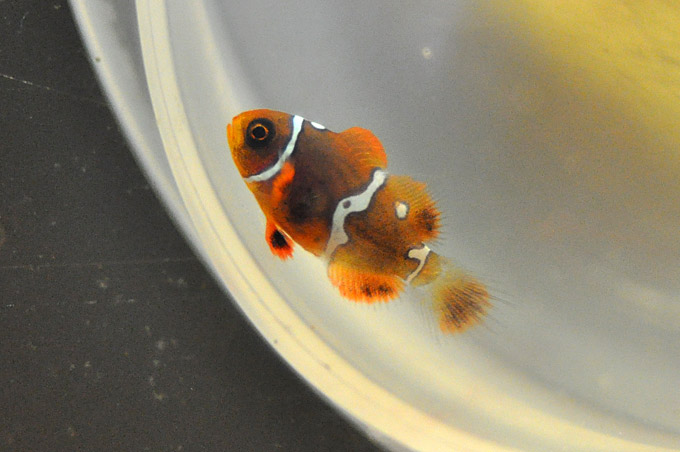
Mike Hoang's Maroon Clownfish, a specimen showing hints of complex patterning - image courtesy Mike Hoang
My personal opinion – if I was to guess how baby Lightning Maroons might look at this age, I’d say Mike’s fish would match my imagination. Seriously – look at that midstripe above…it looks as if the stripe is starting to split and have a dark area in the middle. Take another look at this particular baby from the other side. Could Mike be sitting on a goldmine of baby Gold Stripe Lightning Maroons?
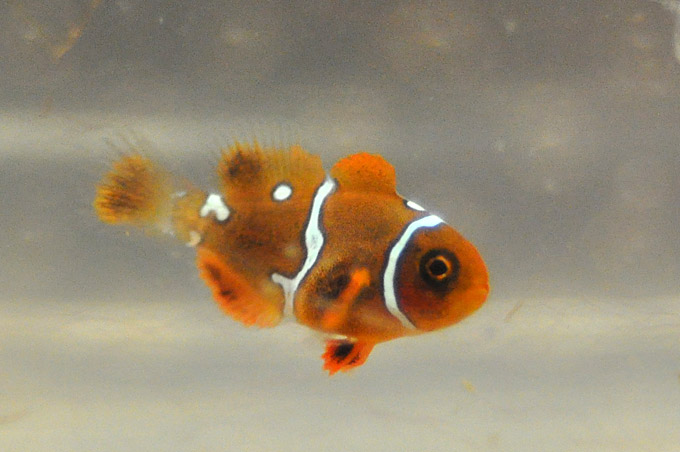
Mike Hoang's Maroon Clownfish, a specimen showing hints of complex patterning - image courtesy Mike Hoang
Time and breeding will tell whether Hoang’s Goldflakes stay named as “Goldflake”, get a new name in “Thunder”, or even somehow wind up being the foundation stock of the Lightning variation in a Goldstripe Maroon population. Until then, our imaginations can wander as we take in these thought provoking photos of Mike’s funky babies. Keep track of Mike’s progress by following his breeding posts over on MARSHReef.com
This is the story of leaving home only to have the entire trip be a subconsciously gut wrenching experience. last week on the Tuesday before MACNA, Tony Vargas swung into town and stopped by with Boomer. Among other things, he sat glued to the Lightning Maroon’s tank for almost an hour, snapping dozens or hundreds of images. I can still remember Tony saying “I think I know where those fish are going to spawn.” pointing to the back wall of the tank where the pair was actively cleaning. Tony got several good shots, one of which is so good that none of you have seen it. I told Tony “that’s my book cover”. The below image is not the “uber good” one that he’s holding back..this was just a “good” one.
I departed for MACNA 2011 (Des Moines, IA) on Thursday, leaving all my aquariums in top shape. They’d be able to withstand a bit of neglect and nothing should’ve gone wrong.
Of course, Friday evening I find I have two missed calls from my wife. I step outside and call her. She tells me that she came home and couldn’t find the Lightning Maroon, so she got worried. I too was getting worried but realized that now, on more than one occasion, this boldly patterned fish still manages to hide from view. It turned out that since calling, she found the fish. However, she hadn’t seen either clownfish eat. This again was cause for concern, so I had her check the APEX for both temperature and pH; the two parameters most likely to be out of whack (it wasn’t until SUNDAY, long after all this, that I even thought to ask her if all the pumps had been running…of course they had been the entire time). Everything was in order.
To me, this was both disconcerting and intriguing. Disconcerting in that for the fish to be off feed, something could be going terribly wrong – i.e. ammonia or nitrite levels rising. However, Renee doesn’t overfeed, and there was nothing big in the tank that could’ve died and caused a massive crash. So, if things are OK, when else have I not seen fish eating? Well, pretty much right before they’re spawning.
Saturday rolled around and I once again got new info. My friend Jay who breeds Maroon Clowns and sometimes stops by the house to watch the fish had come over, and he made the observation that the Lightning Maroon was going to be spawning. Renee said the fish were cleaning like crazy. Talking later with Jay, what he described almost sounded like pre-spawn runs, with the fish doing practice “touch and goes”. Or another way to think of it…mating without laying any eggs. The female would rub her belly down, then the male would follow. That sounds to me like spawning.
MACNA itself reminded me of home many times, with the Lightning Maroon showing up in my presentation, David Vosseler’s SEASMART discussions, and Julian Sprung’s talk too. I don’t remember names, but I know several people came up and asked if I was the guy with the Lightning Maroon. A bit surreal still.
Of course, I get home late Sunday, and a few of my friends at MACNA (most notably Kevin Erickson and Tony Vargas) have heard what is going on and are sharing my possible excitement. I made it home late, and to my relief everything appeared normally. I broke out a flashlight to look for eggs, but found none. Interestingly, both fish were sleeping together on the back tank corner, where I have seen a lot of cleaning activity occurring.
The final bit of excitement came last night, when I was paying close attention to the fish for a minute. I haven’t seen any cleaning activity since I returned home, but I did notice a slight extension coming off the Lightning Maroon’s belly on Monday night. Could this be an ovipositor? Could it in fact be that the Lightning Maroon pair DID spawn while I was away? Afterall, first clownfish clutches are often consumed by the parents.
Based on what I’ve heard and observed, I will go on record to say that I *think* we may have had our first spawn while I was away at MACNA. All of the reported information points to that, and the experiences of many clownfish breeders would support the guess. We will obviously never know (unless I have yet to locate a nest), but it’s possible that our first documented spawn could very well be coming sooner rather than later.
Well, there’s a lot of random things to update on, sadly the only thing I really would love to shout about (a spawn) hasn’t happened yet.
Meanwhile, a followup on the last pairing trial, the third attempt at a “Female Flip”, pairing a loner white stripe maroon with the massively larger “Labrador” white stripe maroon. The short story is that we’ll never know if it was going to work, as the Labrador Maroon Clown died. What I suspect happened was the bowl, which was tilted to allow tank water to circulate through, righted itself and in the process, closed off enough of the flow to cause the fish to asphyxiate. Of course, that could also not be what happened – this fish was probably a decade or more old, and may have just hit the end of the line. Hard to say based on the circumstances I found the dead fish in. Before it passed away however, the smaller maroon showed up simply torn to shreds. The best I could determine was that perhaps the small maroon had entered the larger fishbowl, received a beating, and then left. If that’s the case, it would mean that the “female flip” had failed (or at least had not worked yet).
On the water quality front, things are again driving me nuts in the Lightning Maroon’s tank. The pH hit a record high of 8.7 last night, and was 7.94 this morning. This, despite having not treated the tank with anything to raise the alkalinity or calcium levels (i.e. no dosing of two part) for a week. The corals are definite not looking happy; the Australian Blastomussa that had gone from 1 head to 5 heads appears to have died, and earlier last week I removed the Dragon Soul Favia that had also been previously growing well. The Frags of Aussie Pink Goniopora and Green Goniopora are failing to extend their polyps as well. I’m feeling terribly limited in options to deal with this problem given the small size of the tank, and that normally, it is simply a matter of depressed pH that occurs in smaller tanks. Time to hit the reef chemistry books yet again and see if I can’t figure something out. For now, I’ve reprogrammed the lights via the Apex to start turning off (thus slowing photosynthesis) if the pH hits 8.4, and then again more shut off at 8.5. Still, I’ve not yet programmed things correctly, as the pH is 8.46 right now and the light that is supposed to be off, is not. GRR. This simply cannot be GOOD for the fish, and I’m leaning towards water changes + buffer to at least help eliminate or reduce the low end of the swing – i.e. perhaps 8.3 to 8.7 is better than what I’m currently experiencing.
The final update, our club’s Apogee Quantum (PAR) Meter is finally here in working condition. I got to test PAR readings out of the modified Panorama fixture. With the 4 12K Gen 1 Panorama Units, 2 blue Stunner Strips, and 1 Gen 1 Blue Panorama Unit all running, it’s a total drain of 77 watts. For that 77 watts, with a semi-dirty cover glass, I am getting PAR readings of 150 to 250+ in the upper third of the tank where I have the majority of the Seriatpora corals growing. At the bottom, the readings obviously vary, but are generally 60-100 (i.e. the ORA Red Gonipora is thriving at a 100 PAR reading). As most of you know, these levels are capable of growing just about all photosynthetic organisms we may desire to keep, with the possible exception of Tridacna clams (which, per James Fatheree, really want PAR levels more like 500+). Right above the glass – 700+.
After the initial press release, there were a lot of unanswered questions that people had regarding the newly announced exclusive exporter for marine fish from PNG – EcoAquariums PNG LTD. The leader of the new company, Daniel Navin, corresponded with me via email to help give further insights into the new company and how it would be similar and/or different from the efforts of SEASMART.
While far from the last chapter, a lot of questions got answered and the interview with Daniel Navin was posted this evening on Reef Builders. While some of you may be wondering why you should care, let me be blunt – if there are to be any more wild caught Lightning Maroon Clownfish collected, they will very likely come from this new company. For the next year, if you want PNG marine aquarium fish, EcoAquariums is going to be the only source.
We’re seeing ongoing progress in the Lightning Maroon pairing. More digging, more general surface cleaning, but no eggs yet. Rod Buehler of Rod’s Food sent along an extra-special care package from Mama Percula to Mrs. Lightning this weekend…some of her secret recipe new “Breeder’s Blend”, aka. “No Candelight Needed”. Some is getting tested out here, some has gone to another local breeder and we’re going to do an informal trial counting nest sizes to see how feeding this changes them over a few batches.

There’s been some coral issues…I have a couple areas of tissue loss on a few of the smaller Birdsnest frags, and the Aussie Pinks, and Green, Gonioporas, have stopped extending their polyps. A water test didn’t reveal anything causative…
pH (Seachem) – 8.2
pH (Apex) – 8.38
Total Alkalinity (Seachem) – 2.5 meq/L
Nitrate (Salifert) – 2 ppm
Calcium (Salifert) – 350 ppm
Magnesium (Salifert) – 1155 ppm
Based on the pH descrepency, I recalibrated the pH probe on the Apex Lite…afterwards it came in around 8.25 so we were definitely riding a bit high. I’d been holding back on the C-Balance 2 part dosing due to elevated pH again, but turns out that probably wasn’t necessary.
Still, a 5 gallon (25%-ish) water change was ordered up. We’ll see if that doesn’t help just a wee bit.
I think it’s fair to say that many people in the aquarium industry were eager for news out of Papua New Guinea. It’s probably been about a year (maybe even more) since any fish were shipped from the island nation’s developing marine ornamental fishery. With SEASMART and the PNG Government coming to legal blows, I had to fundamentally change battle plans in the Lightning Project since I could no longer expect any timely arrivals of broodstock options from PNG. Admittedly, I had given up hope that we’d ever see a viable fishery in PNG given that forward-looking statements implying that exports were to resume as early as February of this year obviously didn’t happen.
What does this mean for the Lightning Project? Well, it means that new PNG broodstock from Fishermen’s Island may be a reality in the near future (by end of the year). Based on the FOA rough guidelines I found last week, I know I need at least one more pair of PNG maroons just to ensure the minimum foundation population for a PNG lineage of captive breed PNG White Stripe Maroons. The best possible outcome? There could be more Lightning Maroons yet to come from the wild.
News is spreading fast, with multiple stories out there. I invite you to check ’em all out, and know that even more is already coming.
Ret Talbot’s article in the CORAL newsletter
ReefThread’s podcast
My article on ReefBuilders
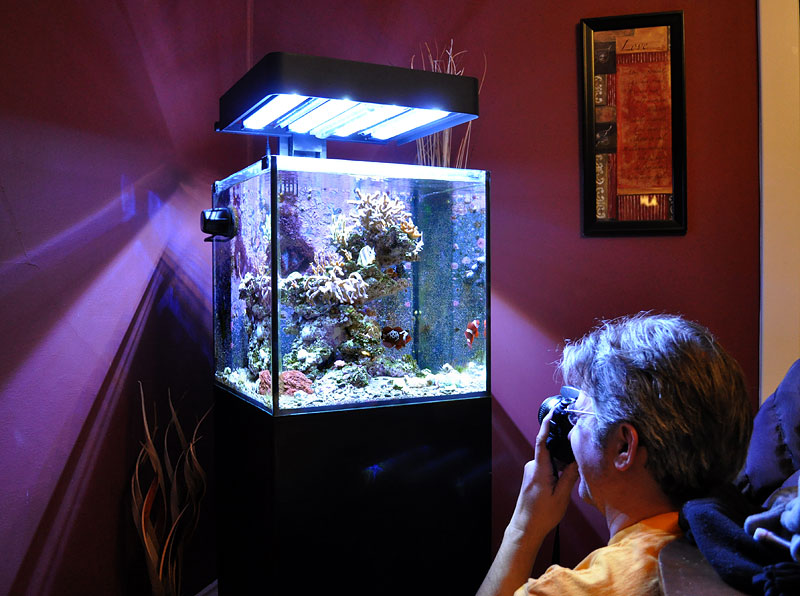
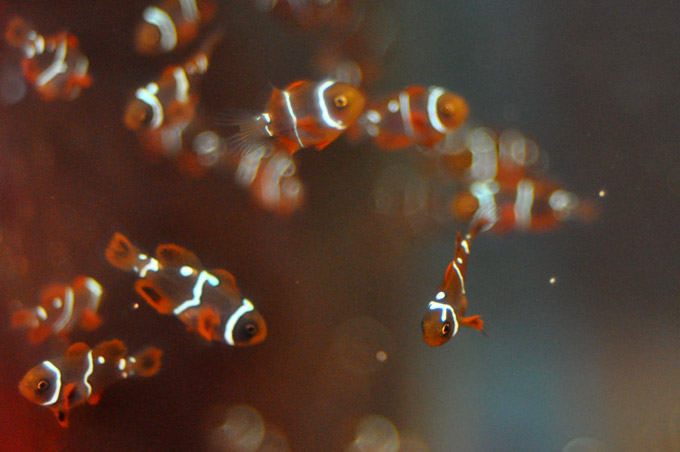
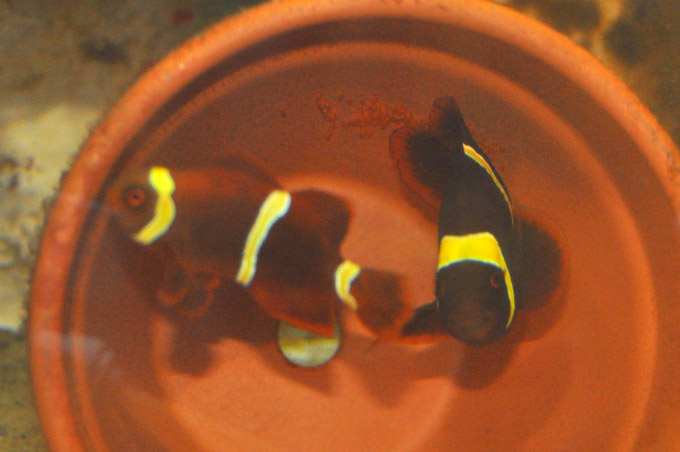
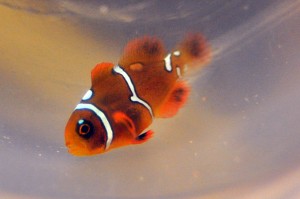

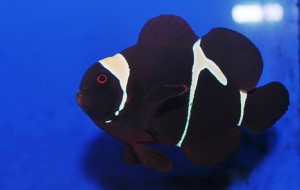
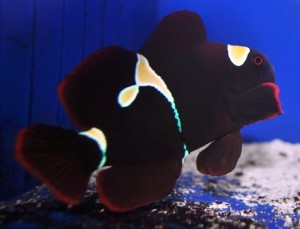
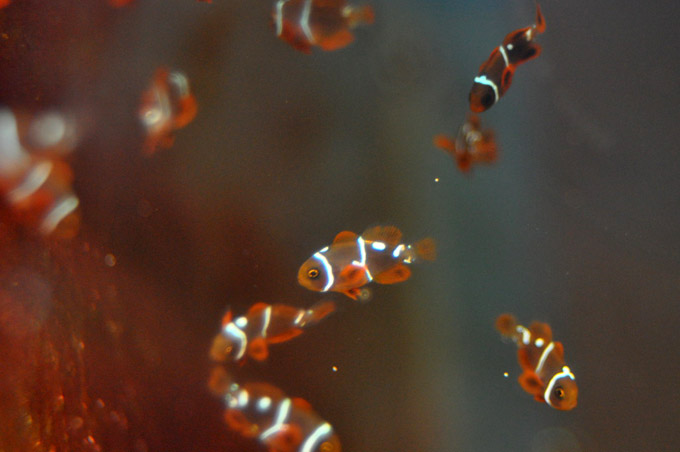
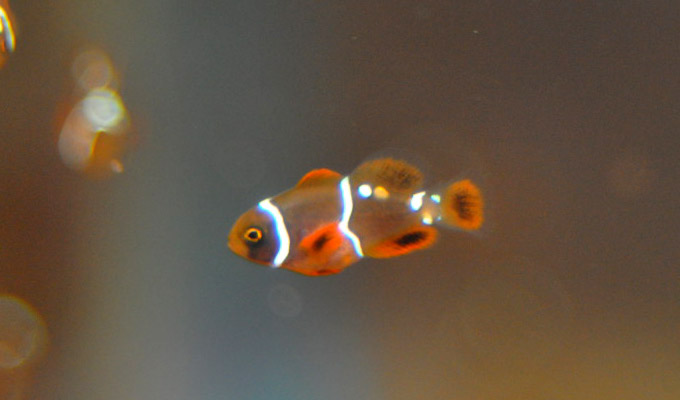
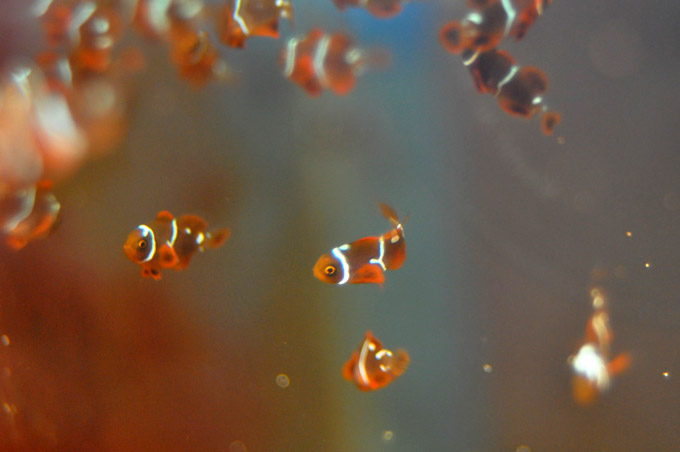
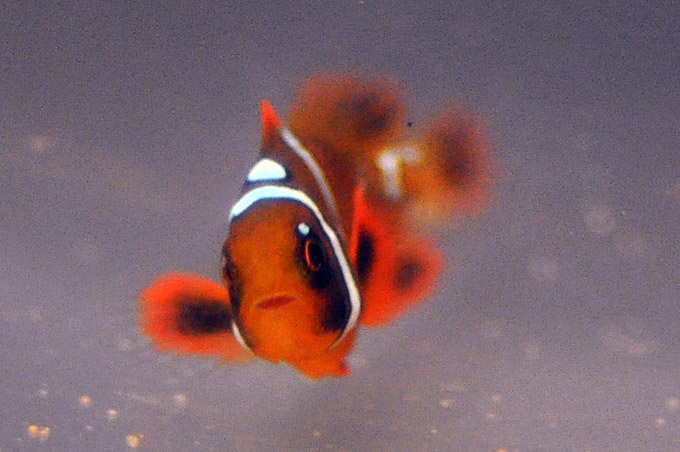

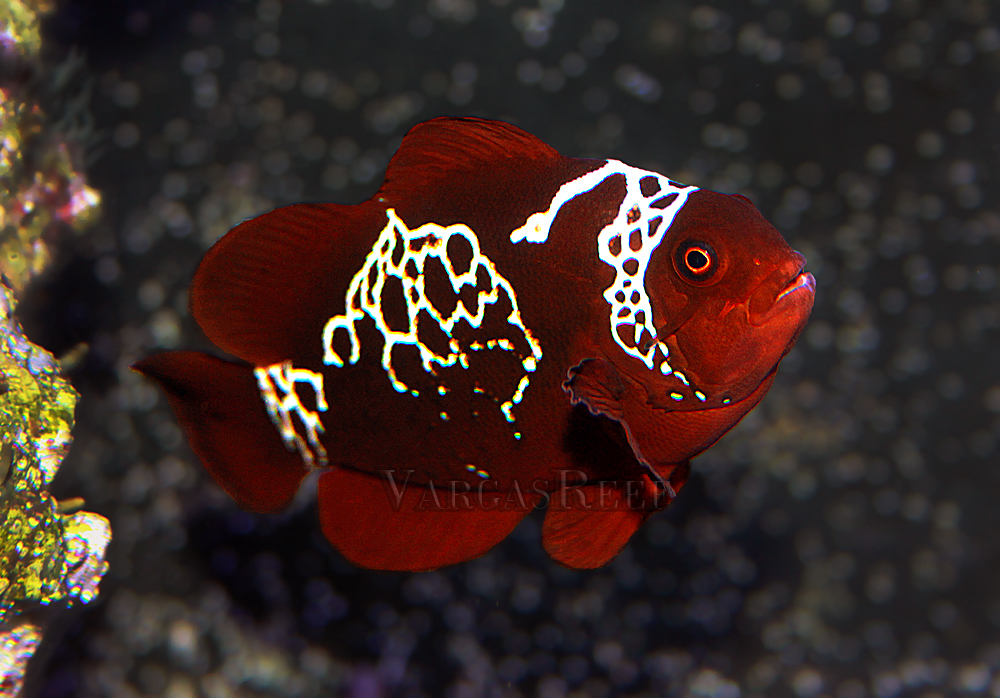
Recent Comments